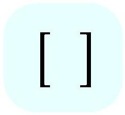 Paul McMahon on Ex Tempore has an excellent post this morning musing on the use of paragraph numbers in judgments in the Supreme Court. He thinks they’re rather unattractive, but useful. I think his aesthetic objections are misplaced, but I agree with him that they are useful, and I think that the sooner Irish judgments come into line with this best practice elsewhere, the better.
Paul McMahon on Ex Tempore has an excellent post this morning musing on the use of paragraph numbers in judgments in the Supreme Court. He thinks they’re rather unattractive, but useful. I think his aesthetic objections are misplaced, but I agree with him that they are useful, and I think that the sooner Irish judgments come into line with this best practice elsewhere, the better.
I’m not sure that the absence of paragraph numbers in US judicial opinions is for reasons of sytle. There is much that is ugly about formal US opinion writing, some (much?) of it driven by the Bluebook, some simply a matter of history. The absence of paragraph numbers reflects the assumption that the judgment will be reported very quickly by West in an appropriate volume of their national reporter system, so that the page number will provide the appropriate pin cite.
However, the rise of the paragraph number in judgments outside the US is a function of the rise of medium-neutral reporting and citation. The Austlii/ Bailii/ Canlii (etc) style of citation – [year] court (case no) [para] – makes it easy to pinpoint the relevant citation whatever the medium of publication: html, pdf, or traditional dead-tree law report. In my view, it is elegant both in functional terms and in aesthetic terms. Paragraph numbers allow pinpoint citations (beloved of the Bluebook, but in this case understandably so), which Paul finds useful precisely because they are. Indeed, Canlii have gone further, putting html anchors into the paragraph numbers, to allow html deep linking for pinpoint citation online. However, it is a non-US development of the last 10-15 years, and imperial US practice is not going to retrofit to accommodate it.
Irish practice is inconsistent, and it has long annoyed me that Irish judges have not fully come into line with the rest of the Bailii-etc family. Admittedly, some now use Bailii-style paragraph numbers in their judgments. As Paul points out, Fennelly J’s adoption of a straightforward paragraph numbering style may be as a result of his time at the ECJ – however, two of his Supreme Court colleagues also spent time in Luxembourg but without the same effect. But Fennelly J is very much in the minority in this regard. Many Irish judges continue to use idiosyncratic numbering styles or none at all. Worse, the Irish Reports add paragraph numbers to their official paper reports, and those paragraph numbers are often inconsistent with those provided by the judges in their own judgments. To my mind, this undercuts the entire rationale for paragraph numbering in the first place.
I think it’s time the Chief Justice issued a practice direction requiring all of the judges (including himself) to conform to the paragraph number format for neutral citation. It will make life better for all of us in the long run.
Re: Canlii have gone further, putting html anchors into the paragraph numbers
I think he’ll find that most of AustLII and BAILII (and perhaps other LIIs as well) have this feature:
http://www.bailii.org/uk/cases/UKSC/2011/1.html#para31
http://www.bailii.org/ew/cases/EWHC/Admin/2011/336.html#para20
http://www.bailii.org/eu/cases/ECHR/2011/306.html#para25
http://www.bailii.org/eu/cases/EUECJ/2011/T11807.html#para25
http://www.bailii.org/uk/cases/UKPC/2010/33.html#para20
http://www.bailii.org/ew/other/EWLC/2011/cp198.html#para7_10
Granted Scottish and Irish judgments are so inconsistent in paragraph numbering that most don’t have this feature. A chief determining aspect for putting html anchors into the paragraph numbers is if the original document was sent to us in a Word or OpenOffice document (although we do add them if they are provided in a consistent format as we have done with ECJ judgments – example above).
Joe
Joe Ury
BAILII Executive Director
http://www.bailii.org
Joe,
Interesting that BAILII has the feature you mentioned, it is something I was unaware of. Some sort of “web 2.0” widget would be nice to allow people copy an anchor url to the clipboard.
Having processed more judgements for BAILII than I care to remember, I echo your sentiments about the inconsistency. Many judgments prior to courts.ie had line numbers, but were in “typewritten” monospace font with hard returns at the end of each line. Utterly horrid!